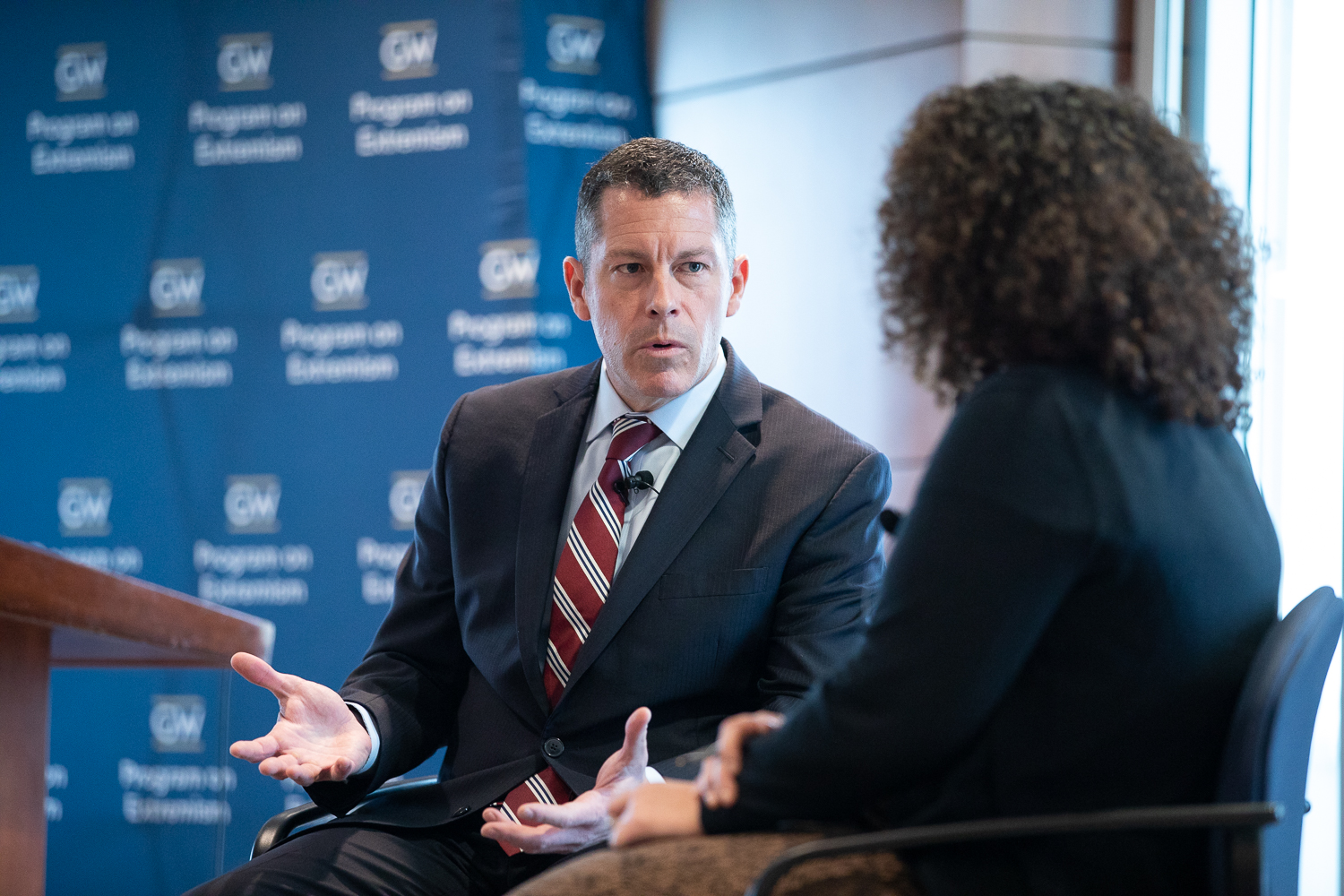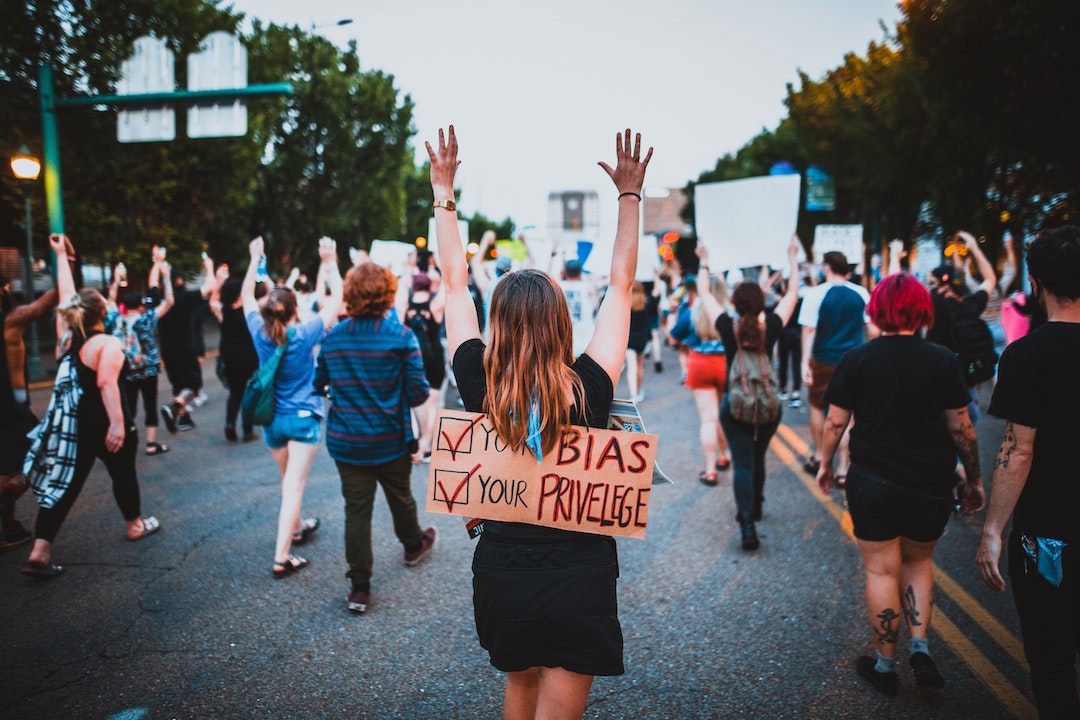By Tatyana Hopkins
Almost two months after the Capitol Hill incursion, more than 250 suspects have been charged in federal court for their involvement in the siege, and those charged represent a diverse group facing a wide range of charges, according to a new report from the George Washington University Program on Extremism (POE).
An update to the database POE launched to track arrests related to the attack on the Capitol, the report, titled, “This is Our House! A Preliminary Assessment of Capitol Hill Siege Participants,” gives an early evaluation of those charged to reveal a link between participants in the siege and a wide array of domestic violent extremist ideologies, actors and movements.
By taking stock of the allegations against participants, POE also hopes to contribute to the ongoing conversation about how to best respond to the Jan. 6 attack by offering data that will allow for a more nuanced discourse as well as effective policymaking, said Seamus Hughes, POE deputy director.
“The events of Jan. 6 may mark a watershed moment for domestic violent extremism in America,” said Mr. Hughes. “Individuals came from all corners of our country, with a healthy mix of those with some operational planning and others taking advantage of the moment.”
The report placed people involved in the siege into three categories—militant networks characterized by hierarchical organization and chains of command; organized clusters, especially groups of family and friends; and inspired believers.
Based on data from hundreds of court documents, Department of Justice press releases, interviews with federal government officials and news articles, the report provides detailed preliminary coverage of the alleged Capitol Hill siege perpetrators.
Of the 257 people charged for their alleged involvement at the time of writing, 221 were men and 36 were women and ranged from ages 18 to 70. According the report, 91 percent traveled from outside the Washington, D.C., metropolitan area and came from 40 states. The highest total of cases by county were in Los Angeles County in California, Franklin County in Ohio and Bucks County in Pennsylvania.
About 33 of those charged had a known military background, and of those, 36 percent has ties to extremist groups like the Proud Boys.
In addition to the wide range of backgrounds of alleged participants, the report also reveals the variety of charges suspects face and the evidence used against them. The alleged perpetrators face as many as 17 counts on their indictments, and they range from trespassing and illegal entry, to conspiracy against the U.S. government and assault of law enforcement officers.
According to the report, due to the unprecedented scale of the mob, law enforcement nationwide turned to all available resources to investigate and prosecute those involved.
Social media played a big role in the evidence used against the charged individuals, with the report finding that 15 percent of extremists publicly indicated their prior intent to storm the Capitol and 68 percent documenting their crimes in real time.
However, the report said while the demographic information about the legal cases is useful for sizing the general threat, they do not tell the “full story of who stormed Capitol Hill on Jan. 6,” while offering a series of recommendations aimed at learning more about domestic extremism and protecting the public.
The authors—who include Mr. Hughes; Lorenzo Vidino, POE director; and POE research staff members Alexander Meleagrou- Hitchens, Devorah Margolin, Bennett Clifford, Jon Lewis, Andrew Mines and Haroro Ingram—urge Congress to establish a nonpartisan Domestic Extremism Commission to identify any systemic national security and policy failures. It suggests that the commission be given subpoena power and that lawmakers and law enforcement officials make a public commitment to work with the commission to complete its mission.
Next, it suggests that the intelligence community should learn more about the response leading up to the Jan. 6 attack, with the goal of finding concrete actions that could have been taken to prevent the violence. The report advises that the intelligence community, led by the Office of the Director of National Intelligence, should perform a systematic review of intelligence reporting and response leading up the Capitol Hill siege, with a particular focus on the question of concrete actions law enforcement should have taken with the increasing frequency of warning signs.
Finally, the authors recommend that the Biden administration use existing structures to improve information sharing between the federal agencies tasked with combating violent extremism after recent congressional hearings revealed both a failure to share information across agencies as well as failure to heed the warnings that did come from actionable intelligence.
“It’s incumbent on us to learn the lessons of Jan. 6th to help ensure nothing like that ever happens again,” said Mr. Hughes “We hope our report can provide some guideposts as the nation grapples with how to address a rising domestic extremism threat.”





